If you want to know about the Permeable concrete or Islamic architecture or staircase design, please click the link.
Introduction
Romanesque architecture was a style that developed in medieval Europe between the 9th and 12th centuries. It emerged from the Carolingian and Ottonian architectural traditions, which were influenced by the architecture of the Roman Empire.
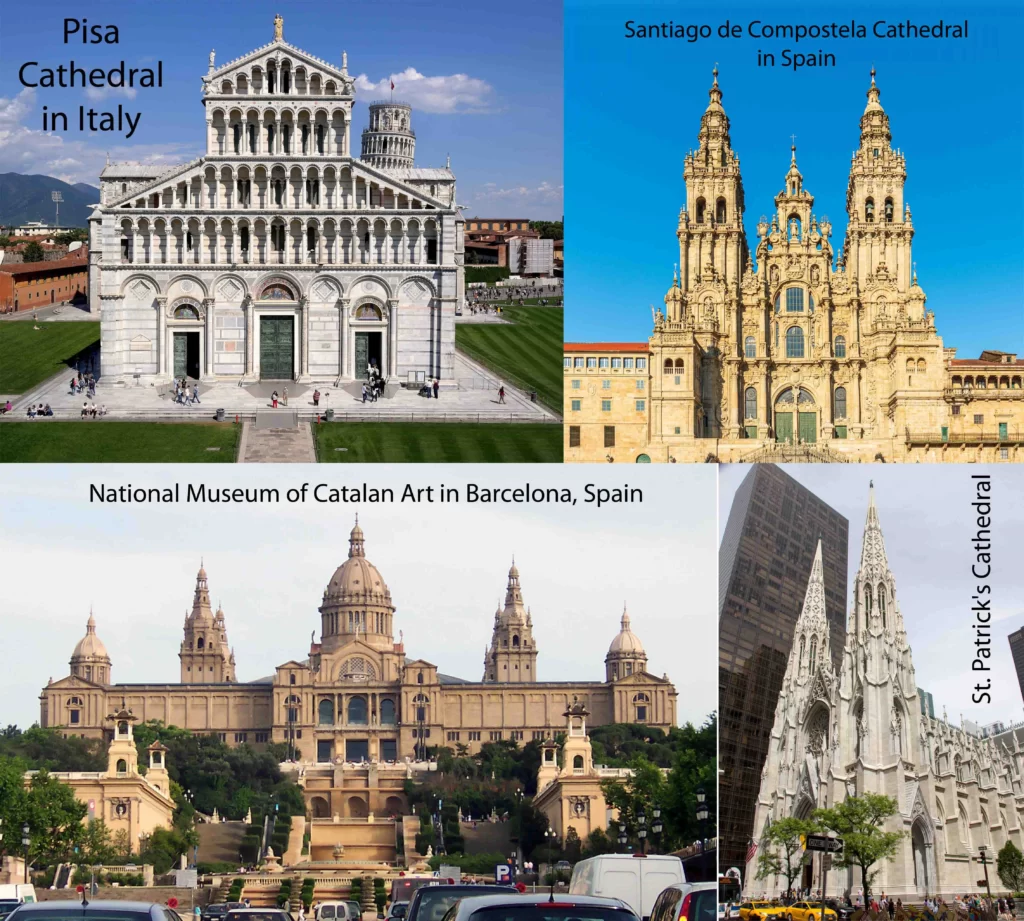
The name “Romanesque” itself comes from the fact that this style of architecture was characterized by the use of Roman-style arches and vaults, as well as other elements that reflected the architecture of ancient Rome.
Some key characteristics and features of Romanesque architecture include:
- Rounded arches: Romanesque architecture is known for its rounded arches, which replaced the flat or slightly pointed arches of the earlier period.
- Thick walls: Romanesque buildings typically had thick walls made of stone, which allowed for greater stability and strength.
- Barrel and groin vaults: Romanesque architecture made use of barrel and groin vaults, which allowed for larger interior spaces without the need for columns.
- Decorative elements: Romanesque architecture featured a variety of decorative elements, including carvings, sculptures, and intricate designs on columns, capitals, and other architectural elements.
The significance of Romanesque architecture in architectural history is that it marked a transition from the earlier, simpler styles of architecture to the more elaborate Gothic style that would emerge in the 12th century.
Romanesque architecture also reflected the cultural and religious values of the time, with many of the most impressive buildings of the period being churches and other religious structures.
Overall, Romanesque architecture played an important role in the development of European architecture and continues to be an important part of architectural history and heritage today.
1) Elements of Romanesque Architecture
Arcades and arches, barrel and groin vaults, thick walls and pillars, and decorative features such as capitals and tympanums are all important elements of Romanesque architecture.
Here’s a bit more information on each:
- Arcades and arches: Romanesque architecture is characterized by the use of rounded arches and arcades. These arches were made of stone and allowed for a greater degree of structural stability, as well as larger interior spaces without the need for additional support columns.
- Barrel and groin vaults: Romanesque architecture made use of barrel and groin vaults, which are types of vaulted ceilings. Barrel vaults are simple, semicircular vaults that are used to cover a single space, while groin vaults are formed by the intersection of two barrel vaults at right angles. These types of vaults allowed for larger interior spaces without the need for additional support columns.
- Thick walls and pillars: Romanesque buildings typically had thick walls and pillars made of stone, which provided greater structural stability and strength. These elements also allowed for the use of larger windows and openings without compromising the building’s stability.
- Decorative features such as capitals and tympanums: Romanesque architecture is also known for its decorative elements, such as intricately carved capitals on columns and tympanums above doorways. Tympanums are typically semicircular or triangular spaces above doorways that are often decorated with sculptures or reliefs. These decorative features added to the visual appeal of Romanesque buildings and often had symbolic or religious significance.
Overall, these elements of Romanesque architecture played an important role in the development of European architecture and continue to be important features of architectural heritage today.
2) Characteristics of Romanesque Architecture
Romanesque architecture is a style of architecture that developed in Europe from the 9th to the 12th centuries.
It is characterized by a number of distinctive features, including:
- Rounded arches: Romanesque architecture is characterized by its use of rounded arches, which were used to create barrel vaults, groin vaults, and other architectural features. These arches were often supported by thick columns or piers.
- Thick walls: Romanesque buildings often featured thick walls, which were necessary to support the weight of the vaulted ceilings and other structural elements. These walls were often decorated with arcades, blind arches, and other decorative elements.
- Towers: Romanesque buildings often featured towers, which were used for defense, as well as for bell ringing and other purposes. These towers were often square or rectangular in shape, and were typically located at the corners or along the sides of the building.
- Decorative elements: Romanesque buildings were often decorated with a variety of decorative elements, including capitals, tympanums, and sculptural reliefs. These elements often depicted religious scenes, such as the Last Judgment or the life of Christ, and were designed to inspire awe and reverence in the viewer.
- Roman-inspired features: Romanesque architecture drew inspiration from the architecture of ancient Rome, and often incorporated features such as columns, pilasters, and decorative friezes.
- Religious symbolism: Romanesque architecture was often used for religious buildings, and featured a number of religious symbols and motifs. These included the use of cruciform plans, the use of apses, and the incorporation of symbolic animals such as lions and eagles.
Overall, Romanesque architecture is characterized by its use of rounded arches, thick walls, towers, decorative elements, and Roman-inspired features.
These elements were used to create awe-inspiring buildings that reflected the religious and cultural values of the medieval period.
3) Romanesque Architecture and Technology
Technological advancements of the time had a significant influence on Romanesque architecture.
The following are some examples of innovative techniques used in Romanesque architecture and the relationship between technology and design in this style:
- Masonry techniques: Romanesque builders made use of advanced masonry techniques, such as ashlar masonry, which involved cutting stones to precise sizes and shapes to create a uniform appearance. This technique allowed builders to create larger and more complex structures, such as churches and castles, with greater ease.
- Stone carving: Romanesque architecture is known for its intricate stone carvings, which were made possible by advancements in stone carving techniques. The use of these techniques allowed for the creation of detailed sculptures and reliefs on building facades, capitals, and other decorative elements.
- Improved roofing techniques: Romanesque builders also developed improved roofing techniques, such as the use of timber roof trusses and stone barrel vaults, which allowed for larger and more complex roof structures.
- Water management: Romanesque builders developed advanced techniques for managing water, such as the use of drainage systems and cisterns, which allowed for the construction of buildings in areas with high levels of rainfall.
The relationship between technology and design in Romanesque architecture was a close one. Technological advancements allowed for greater structural stability and strength, which in turn allowed for more complex and ambitious designs.
For example, the use of stone barrel vaults allowed for larger interior spaces and taller buildings, while advanced masonry techniques allowed for more ornate and detailed decorative elements.
In conclusion, technological advancements played a crucial role in the development of Romanesque architecture, allowing builders to create larger, more complex, and more visually appealing structures.
The relationship between technology and design in this style was one of close collaboration, with technological advancements enabling new design possibilities and aesthetic achievements.
4) Romanesque Churches
The design and layout of Romanesque churches were heavily influenced by religious and social factors.
Here are some key points on the design and layout of Romanesque churches, examples of famous churches, and the role of churches in Romanesque society:
i) Design and layout:
Romanesque churches were typically built in a cruciform shape, with a central nave and transept, and often included multiple apses and chapels.
The design was intended to reflect the centrality of the church in Christian worship and to accommodate large congregations.
Many Romanesque churches were also adorned with elaborate decorative elements, such as sculptural reliefs and frescoes.
ii) Examples of famous churches:
Some of the most famous examples of Romanesque churches include the Speyer Cathedral in Germany, the Pisa Cathedral in Italy, and the Santiago de Compostela Cathedral in Spain.
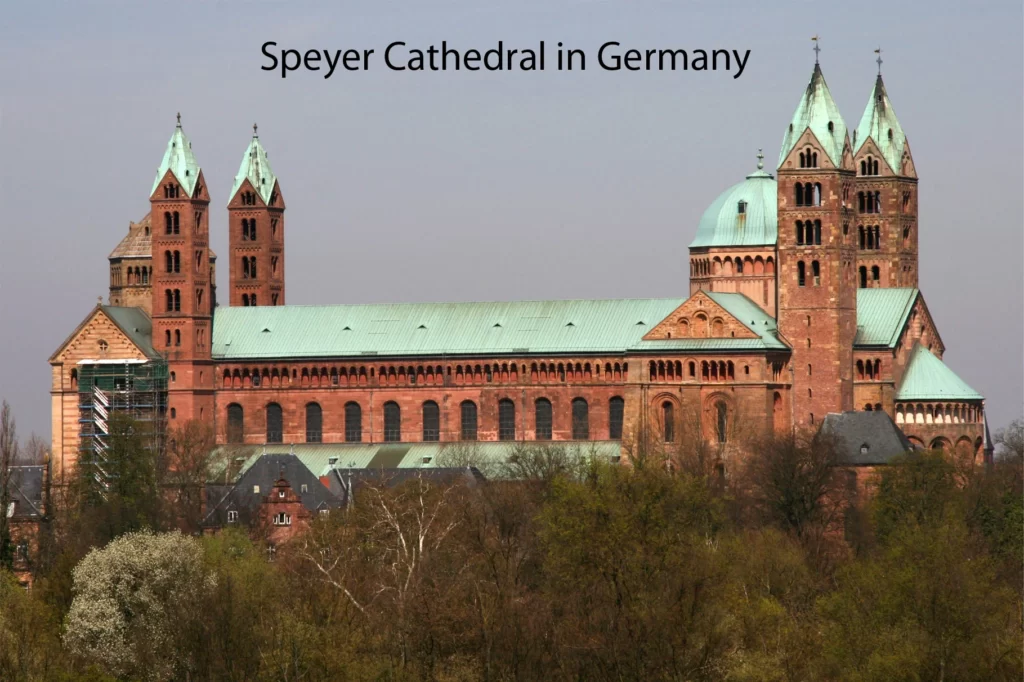
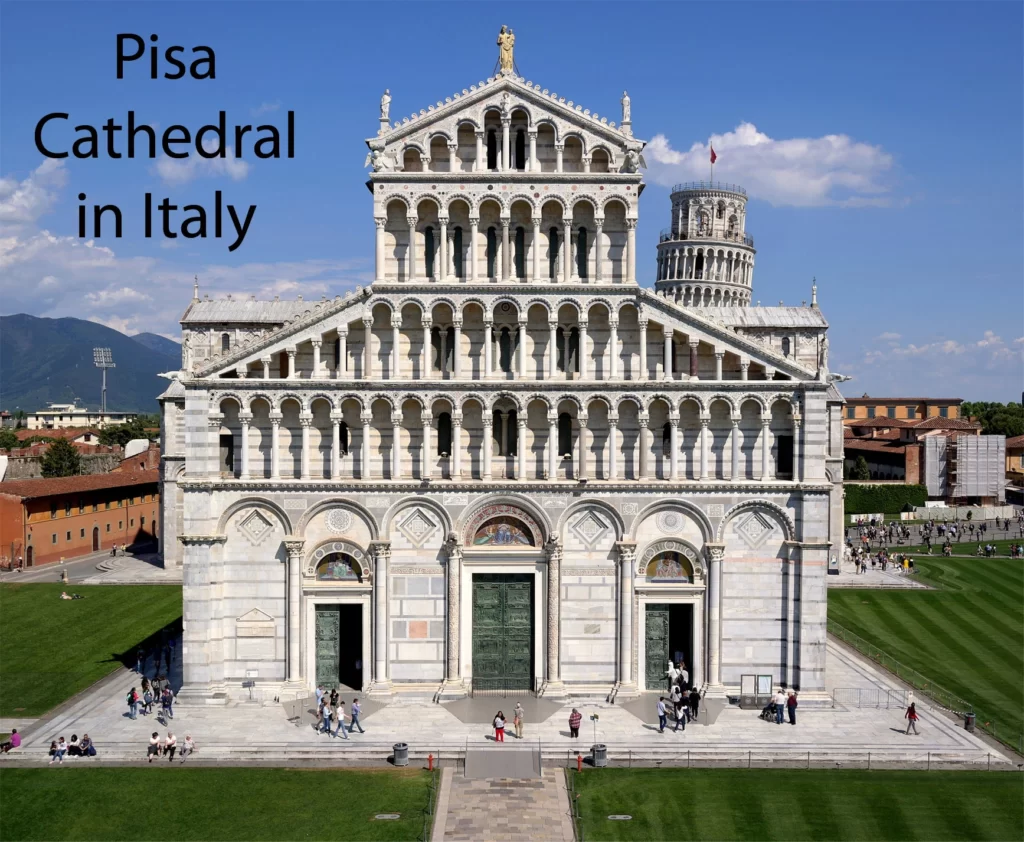
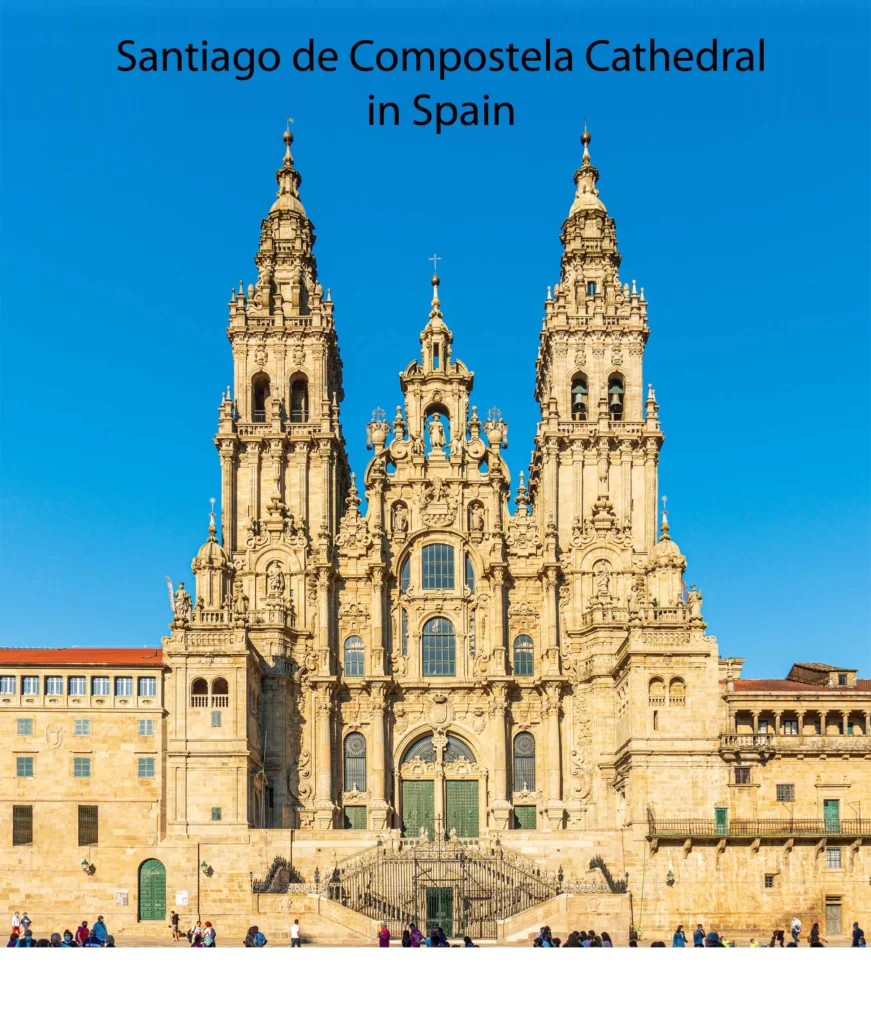
These churches were often built as part of a larger program of religious and cultural expansion and were intended to be symbols of power and prestige.
iii) The role of churches in Romanesque society:
Churches played a central role in Romanesque society, serving not only as places of worship but also as centers of learning, art, and culture.
Many churches were associated with monasteries, which provided education and healthcare to the surrounding community.
Churches also served as pilgrimage sites, attracting visitors from across Europe and providing economic opportunities for local communities.
Overall, the design and layout of Romanesque churches reflected the religious and social priorities of the time, with an emphasis on large congregations, elaborate decoration, and a central role in society.
The famous Romanesque churches continue to be important cultural and historical landmarks, attracting visitors from around the world.
5) Romanesque Castles and Fortifications
Romanesque castles and fortifications were built primarily for defensive purposes during a time of political instability and warfare.
Here are some key points on the purpose and design of Romanesque castles and fortifications, examples of famous castles, and the importance of castles in Romanesque society:
i) Purpose and design:
Romanesque castles and fortifications were designed to provide protection from external threats, such as invading armies or raiding parties.
They were typically built on high ground and included features such as walls, towers, and moats to deter attackers. Many castles also included residential quarters and other amenities to accommodate the lord and his family.
ii) Examples of famous castles:
Some of the most famous examples of Romanesque castles include the Castle of Fenis in Italy, the Château de Loches in France, and the Hohensalzburg Fortress in Austria.
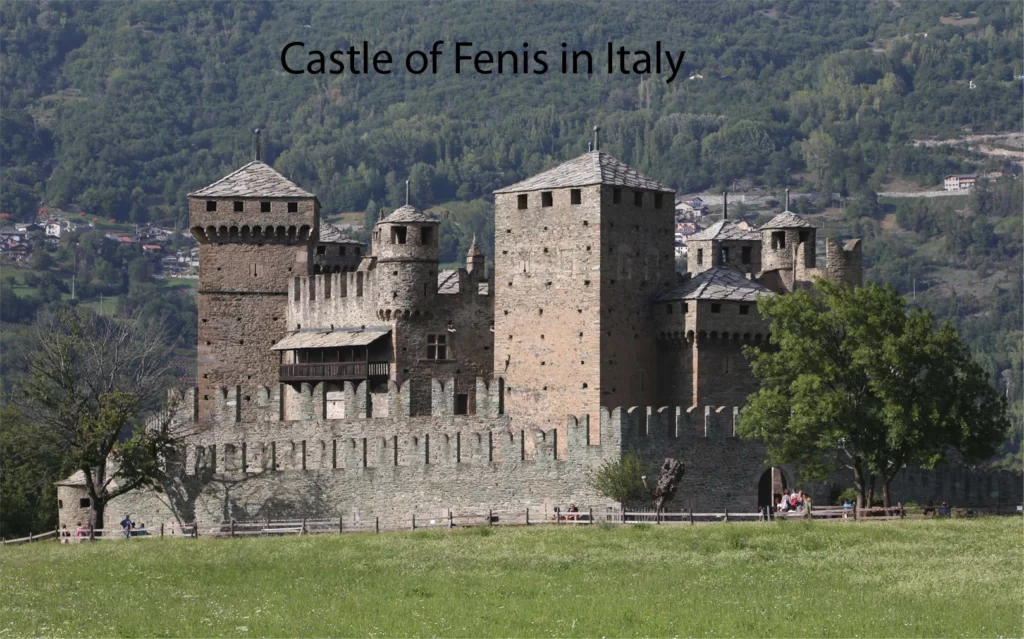

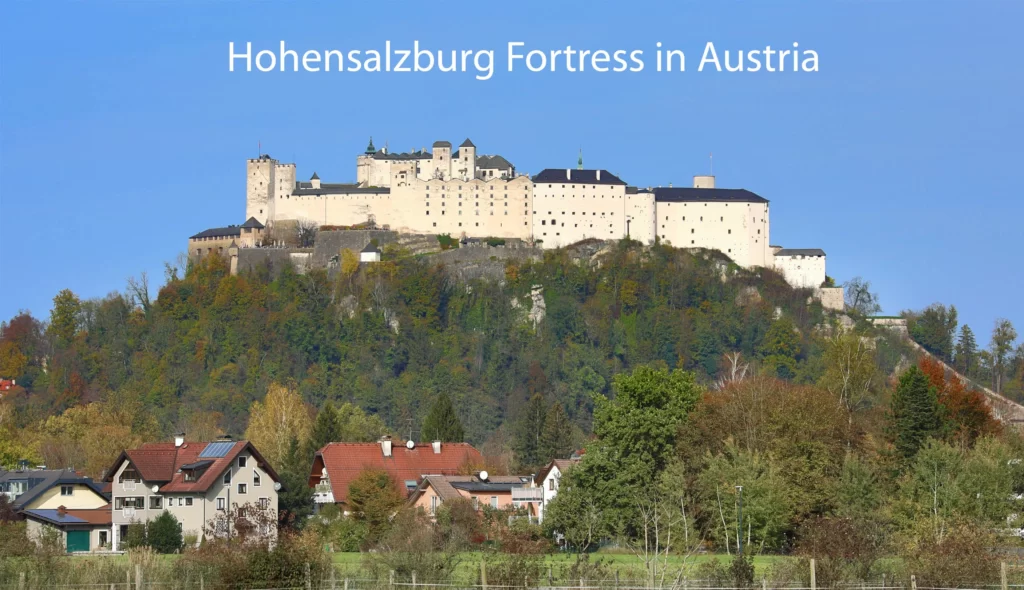
These castles were often built as symbols of power and prestige, and many of them played important roles in regional conflicts and power struggles.
iii) The importance of castles in Romanesque society:
Castles played a vital role in Romanesque society, serving not only as defensive structures but also as centers of political and economic power.
Many castles were owned by feudal lords who controlled the surrounding land and resources, and who used their castles as bases of operations for military campaigns and other activities.
Castles were also important cultural and architectural landmarks, serving as symbols of the power and wealth of their owners.
Overall, Romanesque castles and fortifications were designed to provide protection and project power in a time of political instability and conflict.
They remain important cultural and historical landmarks, attracting visitors from around the world and serving as reminders of the political and social dynamics of the Romanesque period.
6) Romanesque Sculpture
Sculpture played a significant role in the decoration and symbolism of Romanesque architecture.
Here are some key points on the use of sculpture in Romanesque architecture, types of sculpture used in Romanesque buildings, and the significance of sculpture in Romanesque art:
i) Use of sculpture:
Sculpture was used extensively in Romanesque architecture to decorate and embellish the facades, portals, and interiors of churches, cathedrals, and other buildings.
Sculpture was often used to depict biblical stories, saints, and other religious figures, and to convey spiritual and moral messages to the faithful.
ii) Types of sculpture:
Romanesque sculpture included a variety of forms and styles, including relief sculpture, freestanding sculptures, and decorative elements such as capitals and corbels.
Relief sculpture was often used to decorate portals and tympanums, while freestanding sculptures were used to adorn facades and interiors.
Capitals and corbels were often carved with intricate designs and figures, adding to the overall decorative effect of the building.
iii) Significance of sculpture:
Sculpture was a key element of Romanesque art, serving not only as decoration but also as a means of conveying religious and cultural messages to the viewer.
Sculpture was often used to depict biblical stories and religious figures in a realistic and dramatic manner, emphasizing the spiritual and moral teachings of the Church.
Sculpture also played a role in the social and political context of the time, with images of rulers, knights, and other figures used to express power and authority.
Overall, sculpture played an important role in the decoration and symbolism of Romanesque architecture, serving as a means of conveying religious, cultural, and political messages to the viewer.
The variety and richness of Romanesque sculpture continue to be appreciated by art historians and visitors to Romanesque buildings today.
7) Romanesque Painting
Painting was also an important element of Romanesque art, with many churches and other buildings featuring frescoes, murals, and other painted decorations.
Here are some key points on the use of painting in Romanesque art, characteristics of Romanesque painting, and examples of Romanesque paintings and their significance:
i) Use of painting:
Painting was used in Romanesque art to decorate and embellish the walls and ceilings of churches, cathedrals, and other buildings.
Paintings were often used to depict biblical stories, saints, and other religious figures, and to convey spiritual and moral messages to the faithful.
ii) Characteristics of Romanesque painting:
Romanesque painting is characterized by a rich and vivid use of color, with bright pigments applied in bold and expressive brushstrokes.
Romanesque paintings often feature stylized and symbolic depictions of religious figures and stories, with an emphasis on spiritual and moral themes.
Many Romanesque paintings also include intricate decorative elements such as borders and frames, adding to the overall richness and complexity of the work.
iii) Examples of Romanesque paintings:
Some of the most famous examples of Romanesque painting include the frescoes in the Church of San Climent in Taüll, Spain, which depict scenes from the life of Christ and other biblical stories.
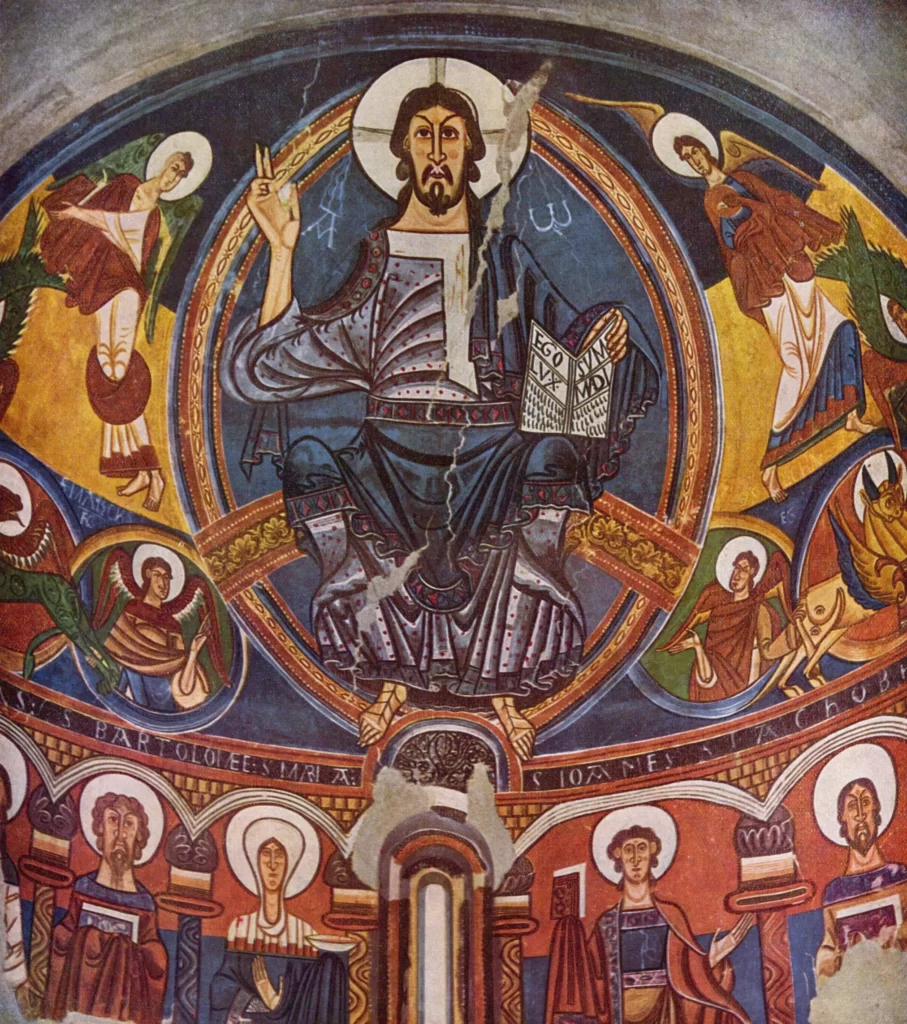
The Bayeux Tapestry, an embroidered textile from Normandy, France, is also considered an important example of Romanesque painting, with its vivid and detailed depiction of the events leading up to the Norman Conquest of England in 1066.
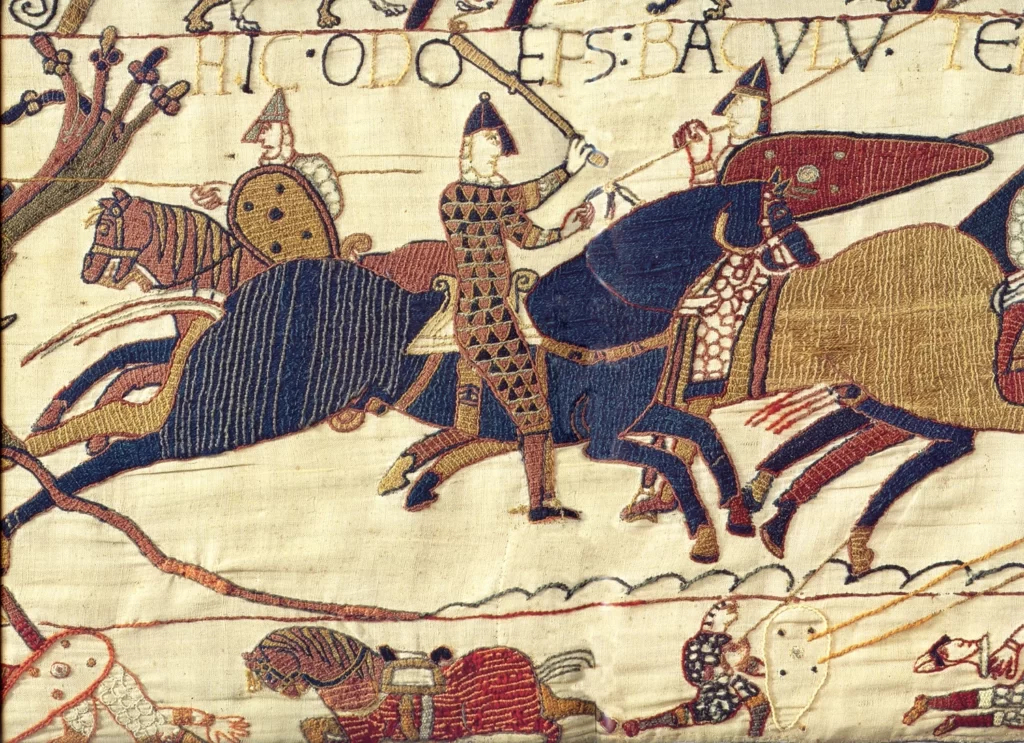
These paintings and other examples of Romanesque art were significant not only for their artistic quality, but also for their role in conveying religious and cultural messages to the faithful.
Overall, painting was an important element of Romanesque art, serving as a means of conveying religious and cultural messages to the viewer.
The vivid and expressive use of color, as well as the intricate decorative elements and symbolic imagery, continue to be appreciated by art historians and visitors to Romanesque buildings today.
8) Romanesque Influence on Gothic Architecture
The transition from Romanesque to Gothic architecture marked a significant shift in European architectural history.
Here are some key points on the transition from Romanesque to Gothic architecture, how Romanesque architecture influenced Gothic architecture, and examples of Gothic buildings with Romanesque features:
i) Transition from Romanesque to Gothic:
The transition from Romanesque to Gothic architecture took place in the 12th and 13th centuries in Europe.
Gothic architecture was characterized by pointed arches, ribbed vaults, and flying buttresses, which allowed for taller and more complex buildings than were possible with Romanesque architecture.
ii) Influence of Romanesque architecture on Gothic:
Romanesque architecture had a significant influence on the development of Gothic architecture, particularly in terms of structural elements such as vaulting and arcading.
Gothic architects drew on the technological advancements and design innovations of Romanesque architecture, while also developing new techniques and forms that allowed for even greater heights and complexity.
iii) Examples of Gothic buildings with Romanesque features:
Many Gothic buildings feature elements of Romanesque architecture, particularly in areas where the transition between styles was gradual.
For example, the Basilica of Saint-Denis in France, often considered the first true Gothic building, features elements of Romanesque architecture such as round arches and solid walls, as well as Gothic features such as pointed arches and ribbed vaults.

Similarly, the Cathedral of Santiago de Compostela in Spain features a Romanesque nave and transept, while the choir and ambulatory are in the Gothic style.

These buildings and others like them demonstrate the complex and ongoing interplay between Romanesque and Gothic architecture.
Overall, the transition from Romanesque to Gothic architecture marked a significant shift in European architectural history, with Gothic architects drawing on the technological advancements and design innovations of Romanesque architecture while also developing new techniques and forms that allowed for even greater heights and complexity.
The blending of Romanesque and Gothic elements in many buildings demonstrates the ongoing evolution and complexity of European architectural history.
9) Romanesque Architecture and Religious Symbolism
The Romanesque architecture of the medieval period was closely tied to the religious beliefs of the time, and the use of religious symbolism was a central feature of many Romanesque buildings.
Here are some key points on the use of religious symbolism in Romanesque architecture, how Romanesque architecture reflected the religious beliefs of the time, and examples of religious symbols used in Romanesque architecture:
i) Use of religious symbolism:
Religious symbolism was used extensively in Romanesque architecture, often to convey important theological concepts or to serve as a visual aid for worshipers. Common symbols included depictions of biblical scenes, saints, and other figures from Christian history and mythology.
ii) Reflection of religious beliefs:
Romanesque architecture reflected the religious beliefs of the time in several ways. Many buildings were designed to be highly symbolic, with the layout, decoration, and iconography of the building all serving to reinforce important theological concepts.
For example, many churches were designed to mimic the layout of the heavenly Jerusalem, with the nave representing the earthly realm and the apse representing the heavenly realm.
iii) Examples of religious symbols:
Some common examples of religious symbols used in Romanesque architecture include the use of the cross, which represented the central tenet of Christian belief, as well as the use of images of saints, which were used to inspire devotion and encourage emulation of their virtues.
Other symbols included depictions of angels, which were believed to serve as intermediaries between God and humanity, and the use of geometric shapes such as circles and triangles, which represented the perfection and order of the divine.
Overall, the use of religious symbolism was a central feature of Romanesque architecture, with buildings designed to convey important theological concepts and to inspire devotion among worshipers.
The close relationship between Romanesque architecture and religious beliefs is evident in the many examples of religious symbols found in Romanesque buildings, which continue to inspire awe and wonder to this day.
10) Conclusion and Legacy of Romanesque Architecture
Romanesque architecture had a lasting impact on art and architecture, as well as on Western civilization as a whole.
Here are some key points on the lasting impact of Romanesque architecture, its significance in the history of Western civilization, and contemporary examples of Romanesque-inspired architecture:
i) Lasting impact:
Romanesque architecture had a profound impact on subsequent art and architecture, serving as a foundation for the Gothic style that followed it. Many of the key features of Romanesque architecture, such as the use of vaulted ceilings, arcades, and decorative motifs, would continue to be used in subsequent architectural styles.
ii) Significance in Western civilization:
Romanesque architecture was a significant development in the history of Western civilization, reflecting the religious, cultural, and technological advances of the medieval period. Its monumental scale, decorative richness, and emphasis on religious symbolism reflected the spiritual and social values of the time, and continue to inspire awe and admiration.
iii) Contemporary examples:
Although Romanesque architecture is no longer a dominant style, its influence can still be seen in contemporary architecture. Many modern architects have drawn inspiration from Romanesque buildings, incorporating features such as barrel vaults, decorative arches, and richly decorated facades into their designs.
Examples of Romanesque-inspired buildings include the National Museum of Catalan Art in Barcelona, Spain, and the St. Patrick’s Cathedral in New York City.

Overall, Romanesque architecture was a significant development in the history of Western civilization, reflecting the religious, cultural, and technological advances of the medieval period.
Its lasting impact can be seen in subsequent architectural styles, as well as in contemporary buildings that continue to draw inspiration from its rich history and design principles.